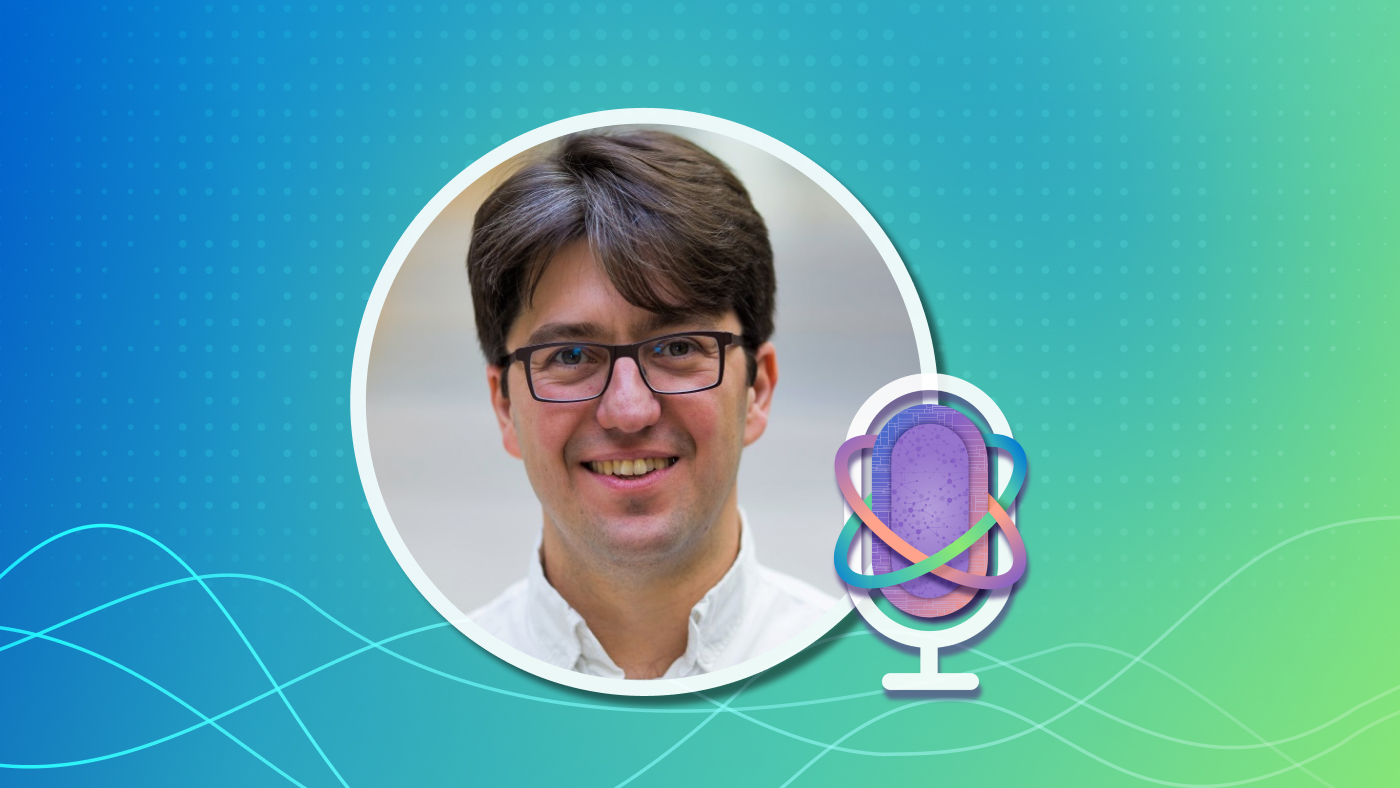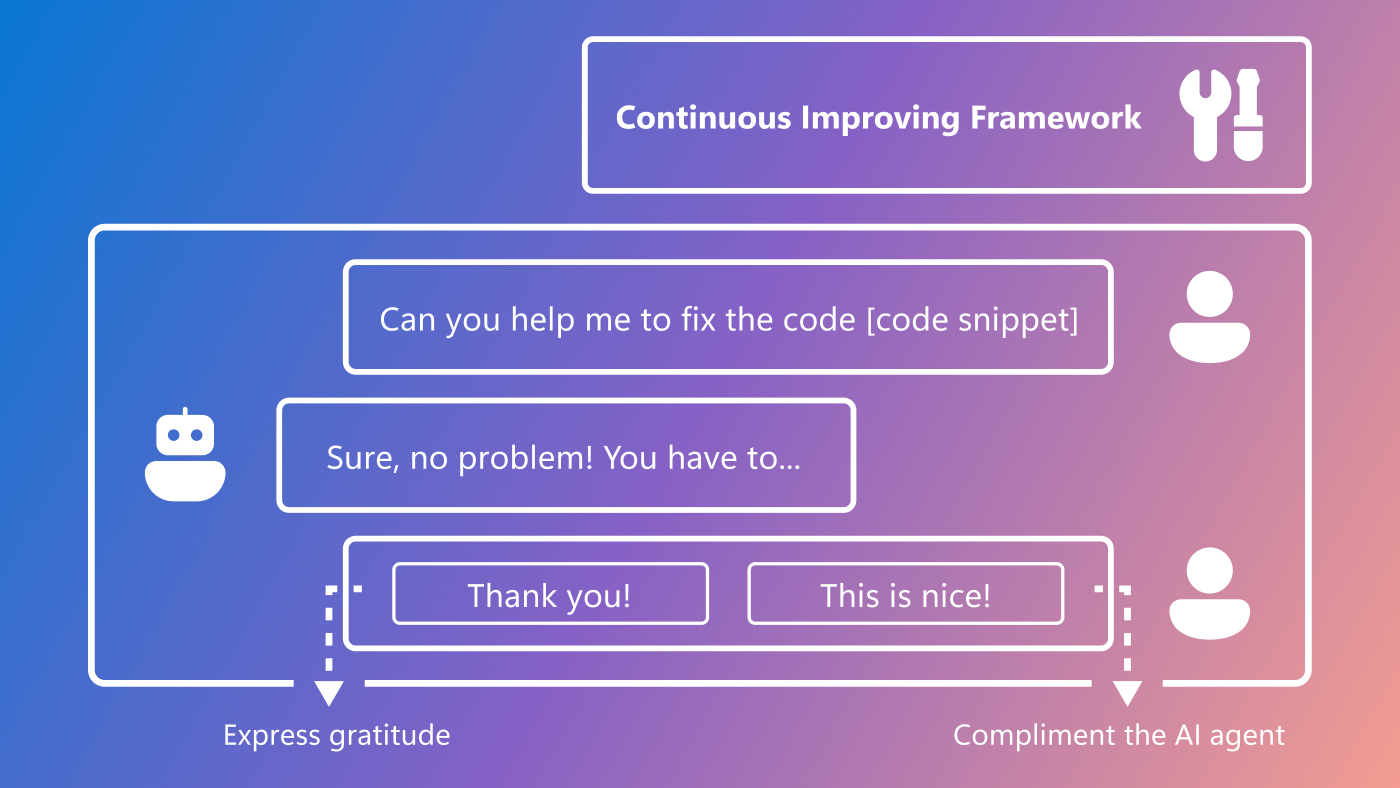By Douglas Gantenbein, Senior Writer, Microsoft News Center
The web, search, and social networking are changing the way students collaborate.
To bring these elements together, Microsoft Research’s FUSE Labs (opens in new tab) is launching a site designed to give students the ability to network with peers, share useful information quickly, and build their own pages that collect information from both inside and outside the classroom—in a sense, transforming the web and social networks into the new classroom.
Microsoft Research Blog
Called So.cl (opens in new tab) and pronounced “social,” the experimental research project is being made available to students in information and design schools at the University of Washington, Syracuse University, and New York University. In time, more schools will be added, potentially expanding So.cl’s use as a learning and information-gathering tool.
So.cl has been designed for students studying social media to extend their educational experience and rethink how they learn and communicate. They can build posts with many elements—photos, video, text, and more—and share them with colleagues. They also can find students with similar interests and build communities around specific educational goals. So.cl might even give students the ability to create their own social tool, customized for their own community.
The researchers behind So.cl deliberately sought to collaborate with a student audience that is more holistic—encompassing representation from the sciences as well as the humanities—rather than simply technical, says Lili Cheng (opens in new tab), general manager of FUSE Labs.
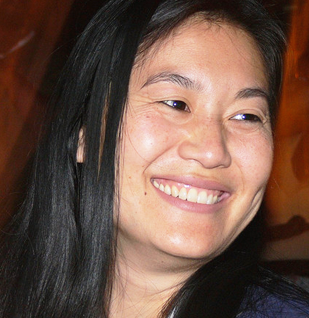
Lili Cheng
“What we’ve seen in the last year or two is innovation in the way schools are teaching and learning from students, creating new programs to study how information spreads, motivates learning, and creates expertise,” Cheng says. “A hugely popular freshman course in some schools is Social Media 101, which often leads to a project-based innovation course where students build and deploy their ideas.
“These are not just computer-science students, but also business, design, or humanities students. They don’t necessarily write code, but they can be encouraged to reimagine how social software and the way people are sharing and exchanging information shapes the world. We are experimenting with So.cl to use our own tools to partner with more students and learn from students with a broad base of expertise.”
So.cl reflects the fact that students today approach learning in a different manner than they did even a few years ago, says Shelly Farnham, a FUSE Labs researcher working on So.cl.
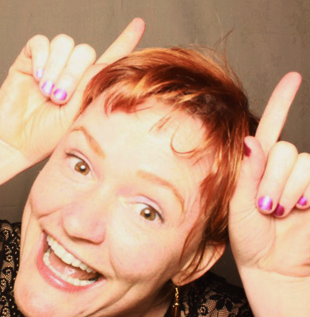
Shelly Farnham
“Today, social media is a really active part of the learning process,” Farnham says. “It’s a common story that we hear: Someone will first hear about something because their friend mentioned it on Facebook or they saw it mentioned on Twitter, and from there, they search in Wikipedia or through a search engine. Then they’ll go back and do searches within Twitter to find out not just the content of a news story, but also how their friends are responding to that news story. There’s this real sense of a conversation happening within social media around what they’re learning.”
So.cl’s ability to connect students who have shared interests is important, given that students today have more varied pursuits than those in the past. As Cheng notes, it wasn’t that long ago that students involved in athletics largely played only long-established sports such as football, basketball, or baseball. Now, they also pursue paddle-boarding, breakdancing, karate, or fencing—sports not necessarily part of the school curriculum—and they use YouTube or Internet how-tos to find experts and learn. With So.cl, students can build their own communities and collections around these pursuits or anything else they enjoy.
That, in turn, will help them learn more, Farnham says. Students today often choose study topics based on the passions of people with whom they connect. Subsequently, a goal of So.cl is to understand motivation and to give students a way to broaden their interests and to connect more effectively with people with similar interests.
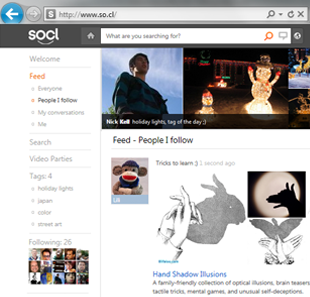
So.cl’s user interface: clean, open, and flexible.
Using So.cl will come naturally to anyone who uses the web. It has a clean, open look and lets users follow people, set up feeds, search, and more. So.cl users can follow specific people or view the entire feed stream. Searches can be webwide, confined to news feeds or specific people, or limited to only images or video.
“If you’ve ever used a social network, it’s a comfortable experience,” Cheng says. “We expect people to continue using their favorite social network and search tools, and we hope that, by experimenting with how search and social networking can be combined, more people experiment with tools we already take for granted.”
So.cl borrows from other FUSE Labs projects to make it easier to compile photos and videos. It has a feature derived from the content-aggregation project Montage that enables authoring of a visual collage of images, videos, and stories. Montage influenced So.cl’s ability to let users quickly assemble content from a variety of sources to build pages about particular interests.
Cheng says she’s eager to see how students use So.cl. She recalls talking with students at New York University’s Interactive Telecommunication Program about the ways they engage with social media as a learning tool. She says she was shocked at their cleverness in employing it.
“I was just blown away,” she says. “They are so sophisticated about the way they share, riffing off one another’s ideas, having fun, and flowing between interests. A group of students lingered after and asked us how we could stay in touch and continue to share experiments.”
One of Cheng’s goals for So.cl is to create a platform on which students can experiment with their own ideas about a social network.
“I am surprised by the amount of frustration and the lack of design innovation in the design of everyday tools such as search, social networking, text messaging, and email,” she says. “None of these were designed for the way students communicate, and I haven’t found anyone who really loves the way they work together. We hope to reduce some technical barriers for students who are interested in exploring something different—and show that more experimentation is needed.”
So.cl got its start when Cheng and others in FUSE Labs were examining Facebook and Twitter data and how it is used in Bing (opens in new tab). They could track URLs people were sharing on Twitter, for instance, and see how news and information were gathered and spread.
“We started to think about how we could create an experience around that,” Cheng says, “about making search social and making it easy to share rich, beautiful posts without having to leave your network.”
Key to that experience was taking the So.cl experience a step beyond what people have been doing.
“There have been social-search projects in the past,” Farnham says, “but they’ve generally focused much more on how to improve the experience of search. In So.cl, there’s a shift in emphasis toward improving collaboration and connecting with other people around common interests.”



